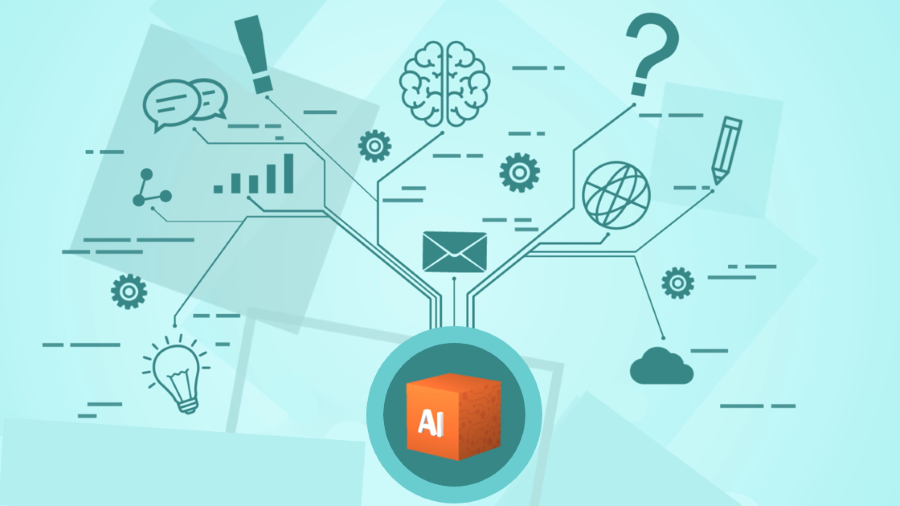
In the 1980s and early 1990s the AI industry experienced two “winters”; where the hype had overtaken the reality, confidence dissipated and with-it investment. Since then there has been a rebirth, an ever-accelerating growth and we are now travelling at lightspeed.
Investment and spending in AI has never been higher. Grand View Research forecast that the global AI market will grow from $39.9 billion in 2019 to $733.7 billion by 2027 (Grand View Research, July 2020). In parallel the Robotics Process Automation (RPA) market has grown exponentially over the last few years, confounding all estimates. In 2016, the market was valued at $600m, hit $1.7bn in 2018, and is estimated to reach over $4bn by 2022 (HfS, November 2018).
Growth, interest and excitement on this scale does raise expectations. Expectations of customers to receive a better level of service and expectations of owners, investors and shareholders for a competitive edge. Business leaders know that they must be constantly transforming and enhancing their organisations or risk being left behind. AI and automation are a key to making this happen.
These expectations are fair – the opportunity that AI and automation presents is significant. By replicating and enhancing the activities completed by the human workforce releases capacity so that they can focus on the more complex and higher value activities. This can unlock benefits in terms of efficiencies, speed of service and productivity amongst others.
The unerring rise of AI and automation has seen a boom in the number of tools, services and platforms available on the market. Ranging from relatively simple functionality built into existing systems through niche solutions for specific problems, right through to cloud-based AI services trained on huge data sets. The leading providers are competing to make the highest quality AI services to drive more customers to their platforms. The breadth and depth of these offerings is outstanding, whilst simultaneously unnerving, as new players enter the market at an increasing pace.
The challenge facing leaders now is how to make sense of the available technology, spend intelligently, achieve their objectives, and get a return on the investment.
There are typically a number of options available – each with their own benefits and risks:
- Create and train a new learning algorithm – at the heart of machine learning is using data to train algorithms to understand how to recognise patterns in new data and take action accordingly. This can be hugely powerful in allowing organisations to predict customer behaviour and automate a response. The challenge is that data science skills and experience are in short supply and high demand. Plus, many organisations don’t have a large volume of legacy data in a usable state available or the experience to know where to invest time in improving data to gain maximum impact, meaning that these projects are often lengthy and high cost before any benefits are achieved.
- Start with small automation opportunities – RPA represents a relatively low barrier to entry to automation and AI. Robots that replicate human activities can be built quickly, simply and, in many cases, cheaply allowing benefits to be realised and momentum to be initiated. The challenges facing RPA have been publicised in recent years with many organisations struggling to find ways to link their processes together and scale software robots beyond the initial implementation. One of the potential reasons is that after an initial Proof of Concept, RPA solutions need to be able to automate increasingly complex processes in order to continue to release benefits.
- Invest in platform and capabilities to build AI solutions – There are a huge number of platforms and tools on the market which wrap a number of capabilities into a single product, and have the breadth and depth to cover the leading edge of AI and automation. Investing in one or more of these and the capabilities to use them can allow businesses to build unique solutions that are right for them. The challenges here is that many of these platforms can be expensive in terms of license cost as well as requiring considerable investment to build and deploy solutions. There is also often a lead time involved in terms of buying, learning and building solutions which can be lengthy and affect the speed at which benefits are released.
- Leverage cloud-based AI services – The competition between the big cloud providers in Artificial Intelligence and Automation has taken off in a big way, with each of the main cloud providers now having rich AI and automation capabilities within their product sets. This means that these tools are now available via a subscription model with many of the tools costing mere pence to run – this heavily reduces the risk associated with testing these new tools to try and solve business problems, and hence the “cost of curiosity” can be extremely low. However, navigating this complex landscape can be hard, and understanding the specifics of what the market has to offer, let alone the intricacies of their pricing models, can be a daunting task for those new to the marketplace.
- Buy a ready-made enhancement – New solutions that utilise AI and automation are appearing on the market every day and many existing providers are upgrading their solutions with these capabilities. Organisations who already know and understand the area they need help with or want to enhance are likely to have a range of options to choose from. The drawback here is that often these solutions are “point solutions”, meaning they are built to enhance specific technologies or address specific problem areas. They can often be very cost-effective where there is an exact match with a particular problem area, but as businesses grow to understand the specifics of their pain points in more detail or want to address new challenges, these point solutions can often fall short – potentially leading to a complex technology landscape.
What We Think
Although every option has risks associated and there is no “one-size-fits-all” answer, AI and automation has considerable benefits, and now more than ever, presents a significant opportunity to almost all businesses. The key challenge is how to identify the ideas that could help transform a business. Ideas that utilise the potential of AI and target problems and opportunities facing organisations.
This is not an easy challenge to address for most businesses, particularly those that are looking to enter this field for the first time. Businesses often need help and inspiration to help with those first steps. Our general guidance is to:
- Make sure you understand the business problem and what you are trying to achieve, before you start considering technology options – don’t be swayed by fancy marketing!
- Invest in educating the team about the options available in the market and the pros and cons of each, including the various different pricing models and timescales to delivery.
- Start small and test ideas. There is unlikely to be a perfect solution, so seek advice or test new technologies directly to help understand which approach may offer the best fit.
- Measure success and the realisation of benefits. Only by dispassionately assessing success rather than allowing interesting new tools and capabilities to cloud your judgement, can decisions be made on how to proceed and what the right level of investment is.








